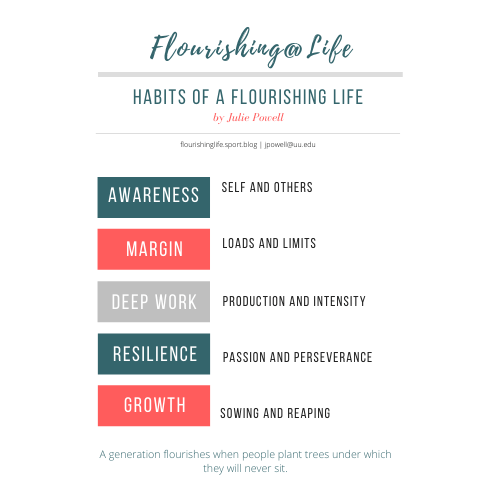Sowing and Reaping
John Townsend shares in People Fuel the importance of creating a Habit of Growth when he shares, “That’s why we are responsible to ask for relational help not just in a crisis but on a regular and sustained basis for the rest of our lives. So many people shy away from going to others for their needs, until their back is against the wall. But that does not provide the growth and strength they require to be a mature and developed [flourishing] person. This is about a lifetime habit of growth.” Henry Cloud’s description of Déjà vu people mirrors this idea of sowing good habits leading to growth. “Sowing and reaping is much bigger than the immediate connection between what I am doing now and what will occur immediately following. Sowing and reaping is about what I will ultimately end up with (take in, live with, be stuck with, and so on) if I sow this particular [habit].”
One of my current dreams is to create a mentoring model which emphasizes the need for continual growth throughout the seasons of a career and lifespan which often comes through creating relational equity with others around us. “Each of us should always be looking to someone who is a step ahead of us in life; someone who helps us examine our habits, our schedules, our thoughts, our feelings, our strengths and our results,” advises Tim Elmore in Lifegiving Mentors. When one is seeking habits that will assist them in creating a flourishing life, they need to consider consistent growth in their life personally, professionally, and especially spiritually.

In addition to relying on wise mentors for counsel, one might consider developing what Carol Dweck calls a “growth mindset” which can occur at any time but especially after a period of controlled floundering. In Wired to Grow, Britt Andreatta shares Dweck’s theory that a person with a “growth mindset believes that they can always get better, that they can always learn something new, or practice something more, and that studying and effort are the pathways to improvement and even mastery. A person with a growth mindset thinks, I may not be able to do this yet, but I can work hard and get better. In fact, the word ‘yet’ is the hallmark of the growth mindset.” Supporting this mindset theory, neuroscience has found “that the brain is incredibly flexible. It can grow and change over our lifetimes, an ability known as neuroplasticity.” So, whether one is eight years old or eighty years old, the habit of growth is vital to a flourishing life.
When a person creates relational equity with mentors and embraces a growth mindset in the process of developing a Habit of Growth, there should be evidence of what is occurring in their life personally, professionally, and spiritually. Beginning with personal and spiritual growth, Dr. Cloud shares in Never Go Back that when you place spiritual health and growth first, you are provided with “direction” which “helps us prioritize our lives. Spiritual growth becomes a compass, a True North. If we know that the most important thing in life is our internal life, then we will choose to devote time and energy to seeking God and our spiritual development before we seek anything else.” We then begin to experience a ripple effect into other areas of our lives. “What if—as a result of growing, getting healthy, and becoming involved and invested—you were able to say things like . . . I have so many great relationships that I have to figure out how to find the time for all of them! My career is going so well, I have a hard time figuring which of the opportunities to decide upon. There are too many! I have so many things I am burning to do and only one life to do them in!”
Establishing a Habit of Growth includes sowing and reaping in all the various seasons of a person’s life. It’s taking action as we discussed in Just Do Something in order to develop into the flourishing person we desire to be. “Seasons and continuing to do the right activities of those seasons are part of the process, too. Planting, nurturing, watering, protecting, healing, pruning, weeding, etc., take months and months, and then . . . yes, the harvest. The yield of fruit comes in season—the harvest season that follows all the growth.” Dr. Cloud and I both desire the same outcomes for emerging adults, and practicing professionals, that these suggestions “will be one more step in God’s journey for you and your life, and that, as you put these truths to work, your seasons of cultivating growth will yield the ‘peaceful fruit of righteousness.’”
So, how are you sowing and reaping today to develop a Habit of Growth? Are there role models that you see practicing this habit well? Please share in the comments below.
Related Blog Posts: Essential Nutrients of Relational Equity | Controlled Floundering | Just Do Something
